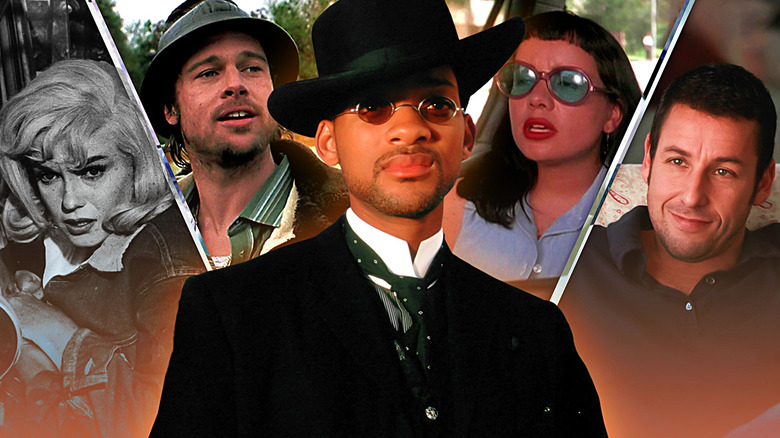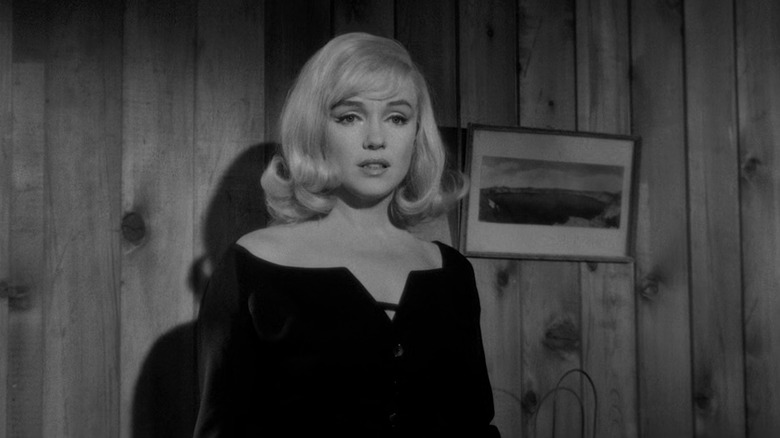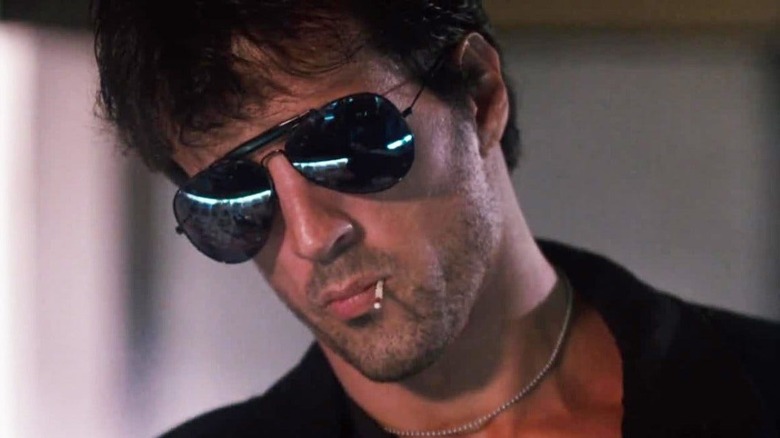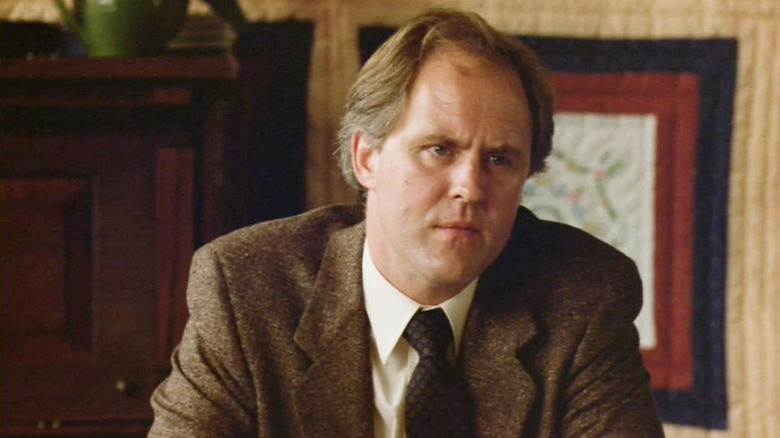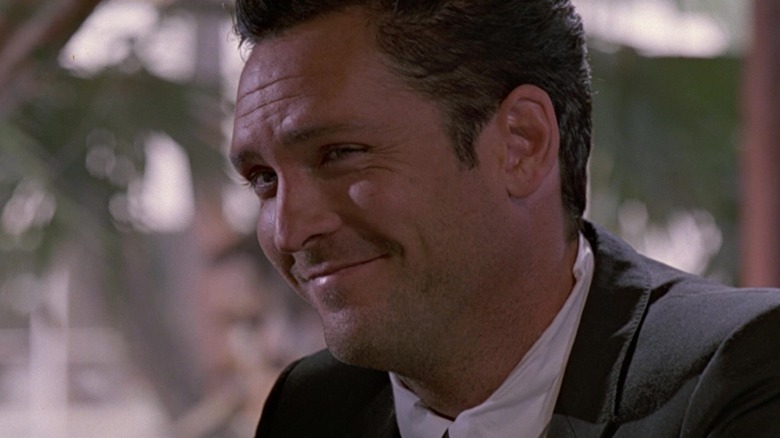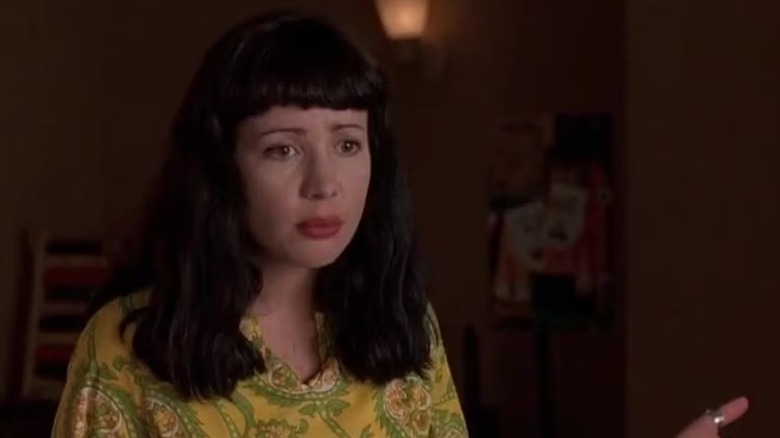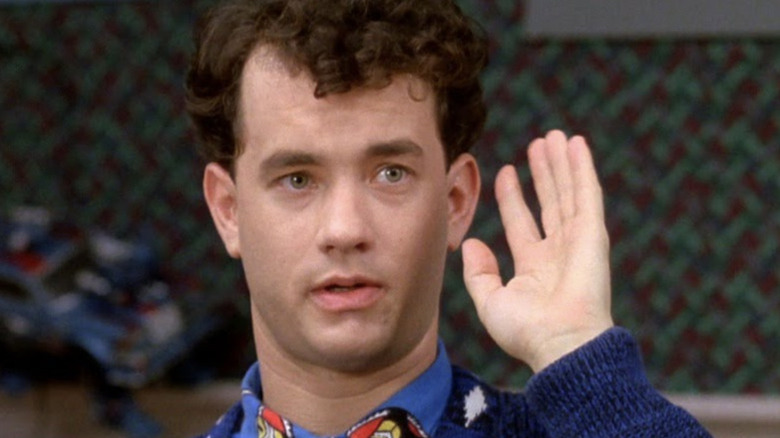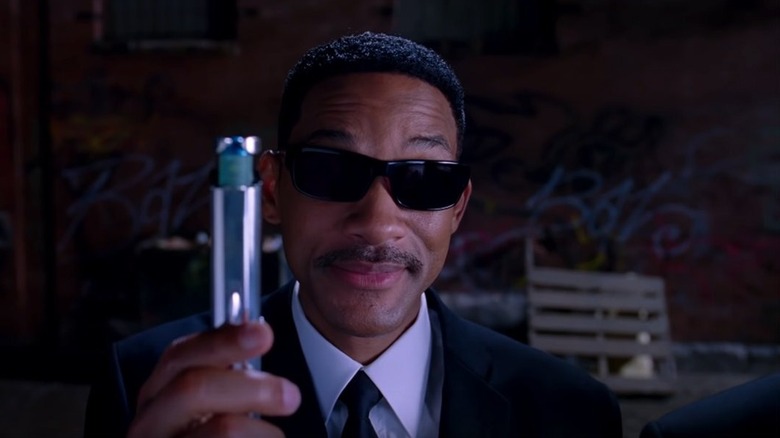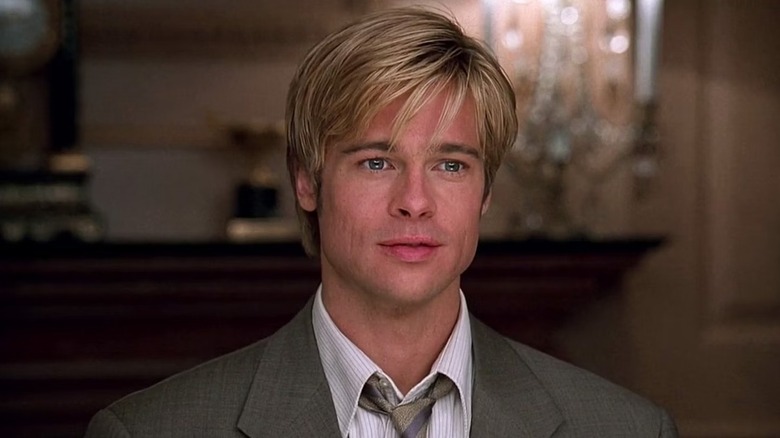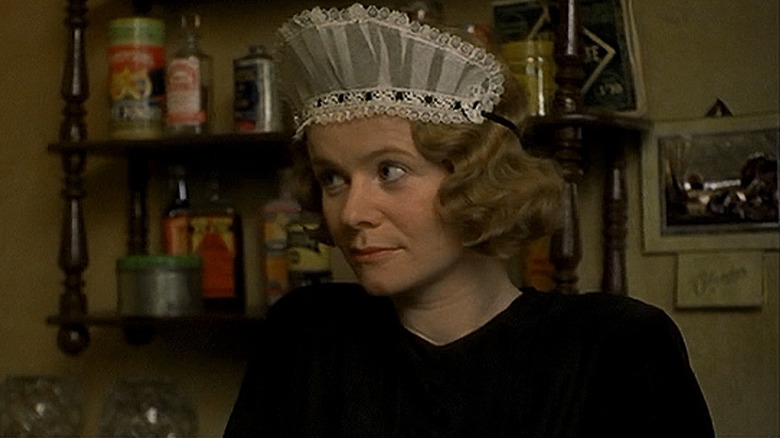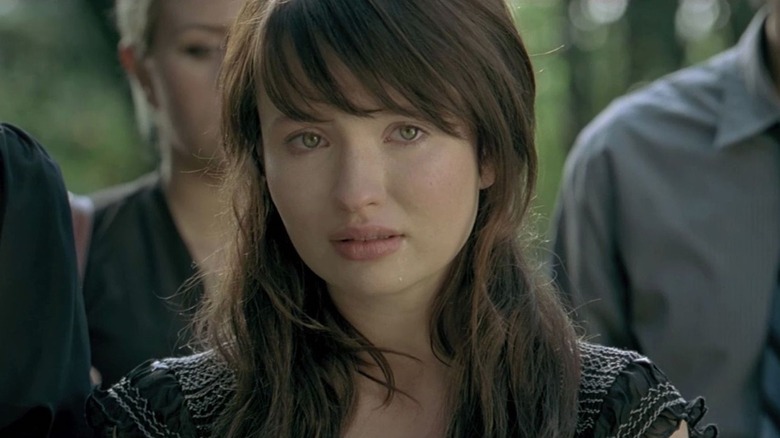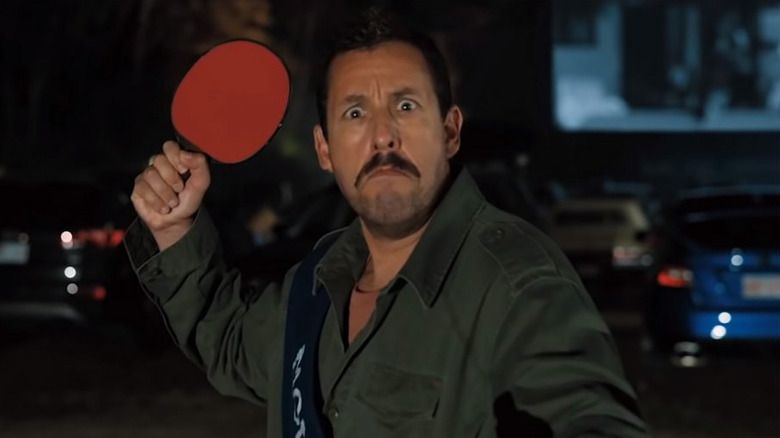12 Actors Who Rejected Parts That Were Written For Them
It's not uncommon for screenwriters to write scripts with specific actors in mind to play certain roles in their story. For writers and filmmakers with a significant amount of clout, they occasionally go as far as to work directly with the intended actors for these planned parts. Of course, even with this level of specificity in writing and planning, no casting is ever guaranteed, even when the cameras start rolling on a production. Some of the most acclaimed and popular writers of their day can't even secure the actors they envisioned to play their biggest characters.
Whether it's creative differences or timing conflicts, actors turn down even the juiciest roles they're offered. It's a sad inevitability of the business. Fortunately, for most of the projects listed here, the actors ultimately cast in these parts, originally planned for others, elevated the projects that they joined. Here are 12 actors who rejected parts that were written for them to play for various film and television projects.
Marilyn Monroe in Breakfast at Tiffany's
Based on the 1958 novella by Truman Capote, the 1961 movie "Breakfast at Tiffany's" captured early '60s American fashion chic through its main character Holly Golightly. Iconically played by Audrey Hepburn, Holly is a heartbreaking socialite in Manhattan who befriends her neighbor, young writer George Varjak (George Peppard). George gradually pierces through Holly's vapid, high society facade and the two begin a cautious romance as Holly endures tumultuous events in her carefully guarded personal life. Though the role became a defining one for Hepburn's entire career, Capote didn't want her to play his literary character and had enough clout to nearly make that happen.
Capote envisioned Marilyn Monroe when creating the character Holly Golightly, with the character mirroring her small town origins and even vaguely describing similar physical attributes for Holly as Monroe's. Though screenwriter George Axelrod was instructed to tailor the part of Holly towards Monroe based on Capote and the studio's interest, this direction proved moot. On the advice of her acting coach Paula Strasberg, Monroe rejected the project for the neo-Western "The Misfits" (pictured above), feeling the Holly role would be negative for her public image. Interestingly, Hepburn nearly turned down the part of Holly too, unable to connect with the character until being personally convinced to join by director Blake Edwards.
Sylvester Stallone in Beverly Hills Cop
Between "Rocky" and "Rambo," Sylvester Stallone was one of the biggest box office draws in the early '80s. As development stalled on the buddy-cop comedy "Beverly Hills Cop" stalled, struggling to find a lead actor, Stallone became interested and attached to the project. Feeling the movie's humor was outside of his usual comfort zone, Stallone drastically rewrote the script, mitigating its comedic elements in favor of dark, dramatic action. Feeling Stallone's vision strayed too far from their original intent, the producers opted to stick with their intended script while Stallone took his retooled concepts elsewhere.
Eddie Murphy, fresh off the success of "48 Hrs." and "Trading Places," replaced Stallone as Axel Foley in "Beverly Hills Cop." With Murphy now center stage, the script and direction for "Beverly Hills Cop" clicked firmly into focused shape, becoming the highest-grossing movie released in 1984. The movie's success cemented Eddie Murphy as a major movie star and launched an entire film franchise. As for Stallone, he took the story elements he planned for "Beverly Hills Cop" to create the 1986 crime thriller "Cobra" (seen above).
John Lithgow in Cheers
Frasier Crane is one of the most prominent sitcom characters ever, standing as a staple in the genre for multiple generations. Memorably brought to life by Kelsey Grammer, Frasier was introduced as a supporting character in the third season of "Cheers" as an intellectual love interest for Diane Chambers (Shelley Long). Grammer went on to star as Crane in the subsequent spin-off series "Frasier," which also ran for 11 seasons like "Cheers," and the 2023 "Frasier" revival series. While Grammer has played Frasier Crane for over 20 seasons of television, he wasn't the first person desired for the role.
By 1984, when production on the third season of "Cheers" began, John Lithgow (seen above in "Footloose") was garnering acclaim as one of most prominent character actors in the business. The "Cheers" creative team approached Lithgow, offering the role of Frasier Crane, only for Lithgow to decline the offer instantly. Not interested in appearing as a series regular on television at the time, Lithgow rejected the part of Frasier without a second thought. Kelsey Grammer accepted the role to Emmy-winning success, while Lithgow did eventually break his no-episodic-television rule, starring in "3rd Rock from the Sun" over a decade later.
Michael Madsen in Pulp Fiction
Filmmaker Quentin Tarantino tends to work with much of the same cast and crew for many of his projects, a distinction visible as early as his sophomore film "Pulp Fiction." The project reunited Tarantino with "Reservoir Dogs" actors Tim Roth and Steve Buscemi, while Michael Madsen (seen above in the same movie) was slated to appear in a much more prominent role. An alleged casting list for "Pulp Fiction" supports Madsen's claim that Tarantino wrote the part of Vincent Vega with him in mind. Instead, John Travolta starred as Vega in the movie, with the role completely revitalizing his acting career.
According to Madsen, by the time that Tarantino offered him a part in "Pulp Fiction," he had already committed to appearing in "Wyatt Earp." Travolta offers a slightly different version of events, claiming that Tarantino changed his mind and offered him the role after spending a wild night with the filmmaker. Though Madsen missed out on "Pulp Fiction," he eventually reunited with Tarantino for his two-part revenge epic "Kill Bill" in 2003. The two collaborated again on "The Hateful Eight" and "Once Upon a Time in Hollywood," but Madsen never got a role as prominent as Vincent Vega.
Janeane Garofalo in Friends
Courteney Cox became sitcom royalty with her starring role as Monica Geller in the long-running comedy series "Friends," helping define a generation. Though Cox was linked to the show before being cast as Monica, initially approached to play Monica's friend Rachel Green, the producers had a different actor in mind for Monica. In an interview with The Hollywood Reporter, series creator David Crane revealed the team wrote the character of Monica with Janeane Garofalo in mind. This version of the character was a darker and edgier Monica than the iteration ultimately played by Cox, leaning into Garofalo's usual comedic sensibilities.
At the time, Garofalo was fresh off the Gen-X favorite comedy "Reality Bites" (pictured above), but she turned down the offer to star in "Friends." Cox, who felt she had more to offer the role of Monica than Rachel, pivoted to the part instead, making it her own. Jennifer Aniston took on the role of Rachel, helping round out the iconic ensemble cast. Funnily enough, Garofalo later turned down the role of Gale Weathers in "Scream," another part taken to fan-favorite heights by Cox.
Tom Hanks in Jerry Maguire
1996's "Jerry Maguire" by filmmaker Cameron Crowe covers the fast-paced world of professional agents and the lengths they go to maintain clients. The titular protagonist is played by Tom Cruise, with Maguire starting his own agency after being fired, with only a single athlete (Cuba Gooding, Jr.) signed with him. Along the way, Maguire figures out what's important in life, falling in love with single mother Dorothy Boyd (Renée Zellweger). This feel-good story was originally intended by Crowe to be played by Hollywood's favorite everyman Tom Hanks.
In an interview with Deadline, Crowe recalled that Hanks wanted to work with producer James L. Brooks again after their successful collaboration for "Big" (seen above). After meeting with Hanks, Crowe began writing "Jerry Maguire" after helming 1989's "Say Anything...," with Hanks initially in mind for the title character. By the time the script was finished and production was ready to begin, Hanks was more interested in directing "That Thing You Do!" at the time. Tom Cruise stepped in, replacing Hanks, and "Jerry Maguire" became one of his greatest acting roles of all time.
Will Smith in The Matrix
There were few actors who consistently pulled significant action blockbuster box office success like Will Smith. When the filmmaking sibling duo, the Wachowskis, were developing their groundbreaking science fiction movie "The Matrix," they planned for Smith to star as its reality-bending protagonist Neo. After completing "Men in Black," Smith took a pitch meeting with the Wachowskis as they described their vision for "The Matrix" and his hero role in it. In a self-published video recalling the offer, Smith recounted that he was admittedly confused by the filmmakers' pitch, including their description of the high-level visual effects involved.
Turning down the opportunity to star as Neo, Smith instead decided to reunite with "Men in Black" director Barry Sonnenfeld for 1999's "Wild Wild West." The steampunk Western was critically panned and received a lukewarm box office reception, released in theaters three months after "The Matrix." The Wachowskis cast Keanu Reeves as Neo, with the movie's success changing the game for Hollywood action blockbusters. Reflecting on his choice, Smith claims that Reeves was the right actor for the role and that his own planned participation could've potentially "ruined it."
Brad Pitt in Almost Famous
Tom Hanks isn't the only Hollywood superstar filmmaker Cameron Crowe wrote a role for only to have the casting changed later. Crowe's semi-autobiographical 2000 dramedy "Almost Famous" featured teenage writer William Miller (Patrick Fugit) tailing the fictional '70s rock band Stillwater to write a magazine feature on them. Among the band members is charismatic lead guitarist Russell Hammond (Billy Crudup), who introduces William to the world of sex, drugs, and rock 'n' roll. The role elevated Crudup's acting career as one of his biggest projects at that time, but it wasn't originally intended for him.
During development on "Almost Famous," Crowe had worked closely with Brad Pitt, with the two planning to have Pitt play Russell. Pitt went as far as to read with actors auditioning to play Russell's love interest Penny Lane, before deciding to drop out of the project. Crowe was crestfallen by the loss, speculating that Pitt was never completely in love with his intended character and uncomfortable with some aspects of Russell in the story. Other planned castings fell through, including Natalie Portman potentially playing Penny rather than Kate Hudson, in her star-making role.
Emily Watson in Amélie
The 2001 French film "Amélie" is a sweetly sentimental and romantic vision of modern Paris and its residents. Directed by Jean-Pierre Jeunet, the movie follows Amélie Poulain, a young woman who decides to devote her life to making those around her happy through good deeds. Along the way, Amélie finds love with the quirky young Nino Quincampoix (Mathieu Kassovitz), embarking on a cat-and-mouse game across Paris with him. The movie found enormous success worldwide, bringing acclaim and attention to French actor Audrey Tautou, who played Amélie.
Jeunet, who co-wrote the movie's story with screenwriter Guillaume Laurant, hadn't initially intended for Amélie to be played by a French actor at all. Instead, the filmmaker approached British actor Emily Watson (seen above in "Gosford Park") for the role, planning for the protagonist to speak both English and French. The latter language requirement caused Watson to balk at the offer, turning it down, feeling her French language skills were not up to par for the performance. Watson had no regrets about turning down the starring role, happy that Tautou shot to international stardom for her performance.
Warren Beatty in Kill Bill
Given the level of acclaim and adoration around his projects, filmmaker Quentin Tarantino has worked with several of the biggest names in Hollywood throughout his career. One actor of enduring repute who eluded Tarantino is Warren Beatty (pictured above in "Bulworth"), with the two nearly working together on 2003's "Kill Bill." Tarantino initially wrote the enigmatic assassin role of Bill with Beatty in mind, who was a much more shadowy figure in the original story. Beatty dropped out before filming, with David Carradine playing the part of Bill in both volumes of the two-part project.
Years later, Beatty shared that he was uncomfortable with the prospect of a lengthy shoot in China and being away from his young children during that time. Beatty claimed principal photography for "Kill Bill" in China ran longer than he and Tarantino anticipated, justifying his decision. Beatty also claimed that he was the one who recommended Carradine for the part of his Bill as his own participation came into doubt. Despite these setbacks, Beatty hoped to work with Tarantino one day, though any direct collaboration between the two has yet to occur.
Emily Browning in Twilight
Love it or hate it, "Twilight" served as a successful bridge between young adult fantasy romance and supernatural horror, with Stephenie Meyer's best-selling novel series adapted into movies starting in 2008. The story has high schooler Bella Swan (Kristen Stewart) falling in love with immortal vampire Edward Cullen (Robert Pattinson), being drawn into a long-standing feud between vampires and werewolves. Though Stewart and Pattinson became globally renowned for their roles as Bella and Edward, author Stephenie Meyer had different actors in mind for her central couple. However, neither of these actors panned out for the author, including one who ended up playing Superman.
Meyer personally envisioned Australian actor Emily Browning and English actor Henry Cavill playing Bella and Edward, respectively. However, by the time casting on "Twilight" began, Cavill was deemed too old for the part, having recently turned 24. Cavill reportedly wasn't even aware he was under consideration for "Twilight" until after Pattinson was already cast. Browning actually auditioned for the role of Bella, but she turned down the part, uncomfortable with committing to a multi-film deal at the time.
Adam Sandler in Inglourious Basterds
Quentin Tarantino's World War II epic "Inglourious Basterds" had been in development for years, including while Tarantino acted in a supporting role in the 2000 comedy "Little Nicky." During production on "Little Nicky," Tarantino developed the character of Donny Donowitz, who bashed Nazis with a baseball bat. According to Tarantino, he wrote the role of Donowitz with Sandler in mind to play him, claiming Sandler (seen above in "Hubie Halloween") was excited at the prospect of beating up Nazis with a bat. Unfortunately, by the time that Tarantino was ready to begin filming "Inglourious Basterds," Sandler had other commitments.
Filmmaker Judd Apatow signed Sandler to his 2009 dramedy "Funny People," also casting Seth Rogen in a supporting role. With the possibility of having a Jewish comedic actor playing against type as Donowitz, Tarantino turned to his friend and Jewish filmmaker Eli Roth. Roth similarly accepted the role of Donowitz and his lethal retribution with enthusiasm, memorably playing Donowitz in the movie. Though Sandler's casting stood the risk of potentially distracting from "Inglourious Basterds" overall, it does offer fans with a fascinating what-if.
